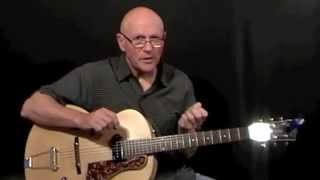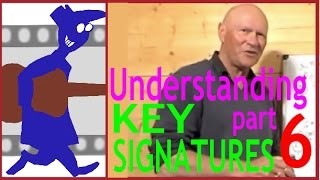The CAGED System. Part 1 of 2.
Published on 26 January 2016
For more information from the source site of this video please visit: http://secretguitarteacher.com/youtube/advanced/theory/c8a5SsbG-1Y/83848286-the-CAGED-system-1.php
The CAGED System of Fretboard Orientation
A different explanation of this popular method for instantly finding notes, scales, chords, arpeggios and modes anywhere on the guitar fretboard, in any key. This two part video is part of a course presented by www.secretguitarteacher.com - quality online guitar lessons backed up by personal support from veteran guitar teacher Nick Minnion
Supposing I asked you to play all the C notes on the guitar. How long might it take you to find them, or work them out? Unless you have a system, it is actually a pretty tricky task because the layout of notes on the guitar appears to have a random pattern:
Hard to spot a pattern there isn't it? But there is one, and once you have learnt it you can use the same pattern to find all the positions of any note. For example all the Gs, Or all the Ebs
Neat trick Eh?
Well, by the end of this lesson you will have learned how to do this too.
The key to it is a pattern we call the CAGED system. It is called this because it relates to the 5 open chord shapes C A G E and D.
First off let's look at a C chord.
Play a C and work out which two notes are the root notes. Root note means the note after which the chord is named - in this case C. You can try working this out purely by ear...
Or you can apply your knowledge of the open string names and the chromatic scale...
Either way, I hope you end up with these two notes.. These form an octave pattern that we can move anywhere on the fretboard. Try and play it using the fingering 1 3 like this..
Of course the name of the notes changes as we move it about, but wherever we use that pattern we refer to it as the C shaped octave pattern because it originates from the open C chord.
OK so, put that to one side for a minute -- what comes next in the word CAGED?
- A. So let's find the root notes of the A chord..
Again we create an octave pattern. That I want you to play using these two fingers - first and third..
Again we move this up the fretboard -- it's always going to give us an octave and we are going to call that shape the A shaped octave pattern.
Next in the word CAGED is G. Now G has three root notes..
This is the most awkward of these shapes to finger, but I want you to get very systematic about this -- you'll see why later -- and use the fingering 1 3 4 like this..
Moving this around is a bit tricky, but there is no need for speed yet, just try and play a few of these here and there to get used to the shape and the order of fingering..
Notice that the G Octave pattern comprises two separable octaves..
Might be worth pausing the video there and practicing those three patterns a bit before moving on...You can access the printout for this from the toolbox to the right of the screen if that helps.
All right! So after CAG comes E. This again has three root notes..
Fingering 1 3 1
Then last but not least D
Fingering 1 4
OK, so now let's see how this all hangs together..
Start with the C shape..
Then replace your third finger with the first and play the next shape in the word CAGED -- A
Then again, replace your third finger with the first and play the next shape in the word CAGED -- G
Once again, replace your third finger with the first and play the next shape in the word CAGED -- E
Now you may be beginning to see the logic in the fingering instructions, by leaving this third finger here..
We keep the linking consistent -- always replacing the third finger with the first. This is the key to learning this quickly.
Finally we link to the D shape to complete the word CAGED. We use the fourth finger to remind us to reach for the next fret.
Having completed the word CAGED we simply go back to the first letter in the word and start spelling it out again..
This time replacing the fourth finger..
And continuing on round the pattern until we fall off the end of the fretboard.
So that is the pattern for playing all the C notes on the guitar.
Now you may have noticed that we repeat some of the notes..
This is important because when we are practicing this pattern we are actually learning two different things --both of them very useful in the long term.
Firstly we are simply learning to find notes of the same name on the fretboard. But also, each of the FIVE CAGED patterns is important to know as well. That is why we drill it by playing each pattern in its entirety even when, because the patterns' overlap, this means we use the same notes more than once..
 How to make your own chords on the guitar - Part 1
How to make your own chords on the guitar - Part 1
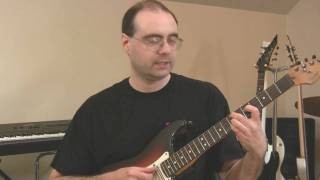 GUITAR THEORY: Scale Degrees and Modes
GUITAR THEORY: Scale Degrees and Modes
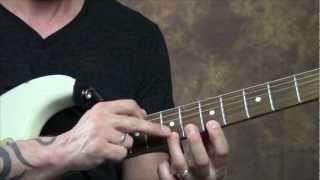 Learn to Bend Your Guitar Strings the RIGHT Way
Learn to Bend Your Guitar Strings the RIGHT Way
 SRV Rake Technique
SRV Rake Technique
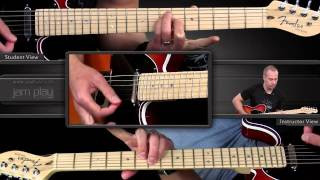 Beginner Lesson - Barre Chord Basics and the E Sha...
Beginner Lesson - Barre Chord Basics and the E Sha...
 (CIRCLE OF FIFTHS): Minor key Version
(CIRCLE OF FIFTHS): Minor key Version
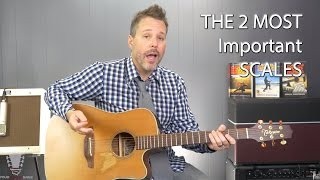 2 Scales Every Guitar Player Should Know
2 Scales Every Guitar Player Should Know
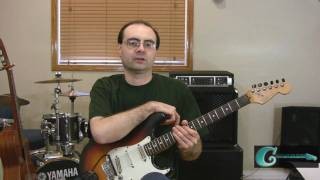 Guitar String Bending Technique
Guitar String Bending Technique
 RobbieCalvoGuitar.com - D Dorian Lesson
RobbieCalvoGuitar.com - D Dorian Lesson
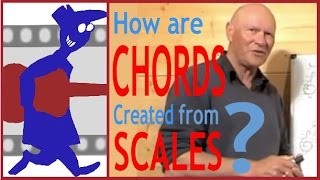 How are chords created from scales?
How are chords created from scales?



